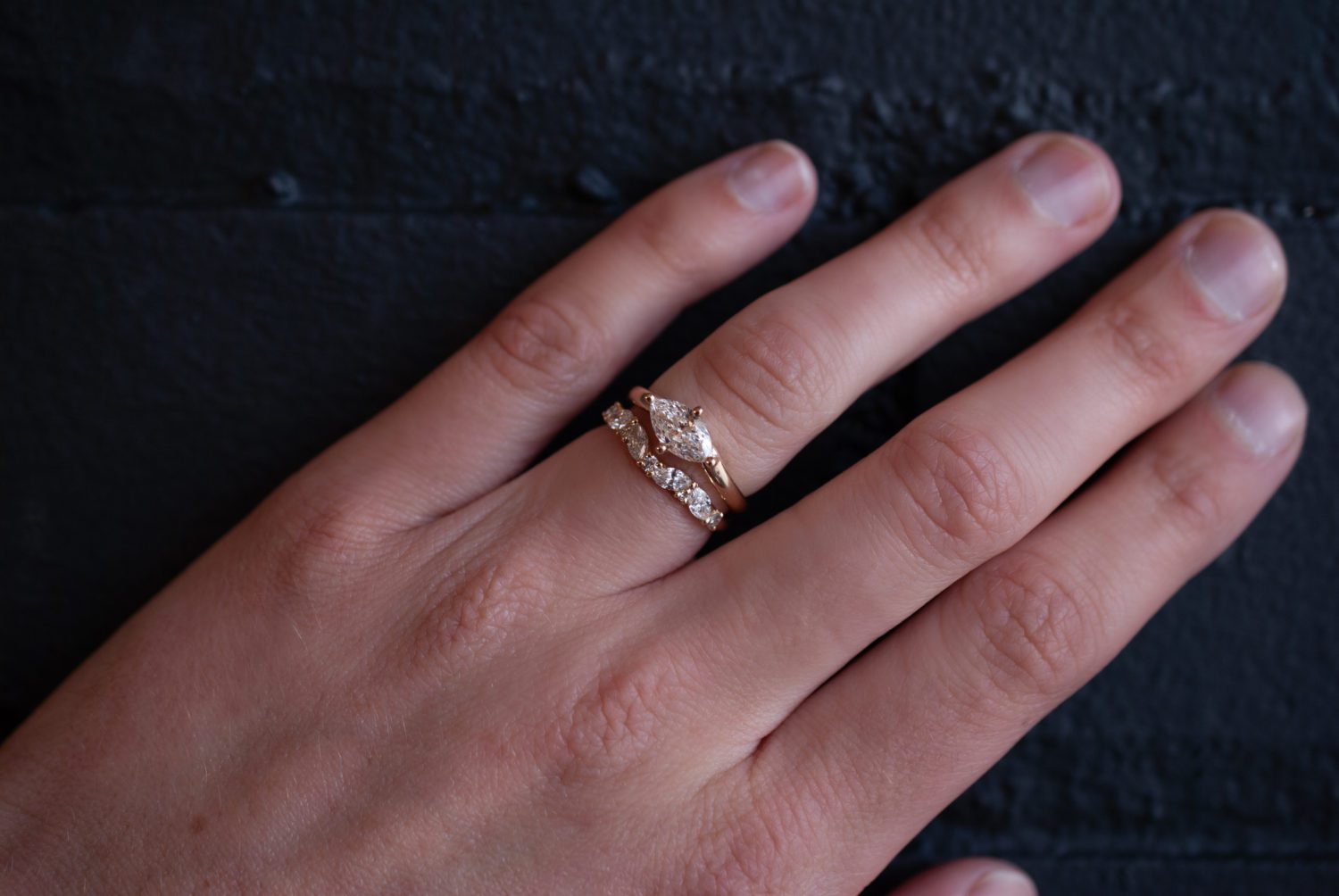
In the world of gemstones, few have achieved the level of prestige and allure that diamonds possess. For centuries, diamonds have been the standard of luxury, symbolizing love, commitment, and status. However, a stunning alternative has emerged in recent years that challenges the traditional diamond’s throne — the moissanite diamond. With its dazzling brilliance, ethical appeal, and affordability, moissanite is rapidly becoming a sought-after choice for engagement rings and other fine jewelry. But what exactly is moissanite, and how does it compare to diamonds?
What Is Moissanite?
Moissanite is a naturally occurring mineral made up of silicon carbide (SiC). It was first discovered in 1893 by French chemist Henri Moissan in a crater formed by a meteorite in the Arizona desert. While Moissan initially thought he had found diamonds, further analysis revealed that the mineral was something entirely different — silicon carbide, a compound that would later be identified as the base of moissanite gemstones.
In the late 20th century, scientists began to create synthetic moissanite in labs, making it more accessible to the public. Today, nearly all moissanite on the market is lab-created, ensuring a more consistent and ethical supply than natural diamonds.
How Does Moissanite Compare to Diamonds?
While moissanite and diamonds look remarkably similar at first glance, several key differences distinguish them.
1. Brilliance and Fire
Moissanite is renowned for its extraordinary brilliance, which refers to the amount of light it reflects. Due to its unique crystalline structure, moissanite has a higher refractive index than diamonds. This means it reflects light more intensely, creating a fiery sparkle that is often described as more brilliant than that of diamonds. Moissanite’s “fire” — the dispersion of light into rainbow colors — is also more pronounced than that of diamonds, making it appear even more dazzling in certain lighting.
2. Hardness and Durability
Diamonds are known for their unparalleled hardness, ranking 10 on the Mohs scale of mineral hardness. Moissanite, while not as hard as diamonds, is still impressively durable, scoring 9.25 on the Mohs scale. This makes moissanite highly resistant to scratching and everyday wear, lab grown diamonds, ensuring that it can withstand daily use, particularly in rings and jewelry that are worn frequently.
3. Color and Clarity
While diamonds come in a range of colors from colorless to faint yellow or brown, moissanite typically has a slight yellow or greenish tint, especially in larger stones. This color difference can be subtle, and many people don’t notice it unless the stone is compared directly to a diamond. Moissanites are also available in a range of clarities, with most being free of visible inclusions to the naked eye.
4. Price
One of the most compelling reasons people choose moissanite over diamonds is the price. Moissanite is significantly less expensive than diamonds, often costing a fraction of the price for a comparable stone in size and quality. For those seeking a beautiful stone with a substantial budget-friendly advantage, moissanite provides an excellent alternative.
5. Ethical Considerations
While diamonds have historically been associated with ethical concerns, particularly in regions affected by conflict (often referred to as “blood diamonds”), moissanite offers a more ethical option. Moissanite is always lab-created, so there is no need to worry about the environmental or social implications that may come with mined diamonds. Consumers looking for a more sustainable and ethical gemstone often turn to moissanite as a solution.
Benefits of Moissanite
1. Affordability
For individuals on a budget or those who want to invest more in their setting or other aspects of their jewelry, moissanite offers a more economical option without sacrificing brilliance or beauty.
2. Eco-Friendly
Since moissanite is lab-created, it avoids the environmental damage caused by diamond mining. The process of extracting diamonds from the earth can be incredibly harmful to ecosystems, while lab-grown moissanite is more sustainable.
3. Stunning Aesthetic
The dazzling brilliance of moissanite, along with its exceptional fire and sparkle, make it a striking centerpiece in any piece of jewelry. Whether set in a ring, necklace, or earrings, moissanite can outshine many other stones in terms of visual impact.
4. Longevity
Moissanite’s durability ensures that it will maintain its beauty for years to come. With proper care, a moissanite stone can last a lifetime, just like a diamond.
Moissanite in Engagement Rings
Moissanite’s popularity in engagement rings has been growing, especially among couples who prioritize cost-effectiveness, ethical considerations, and visual appeal. The stone’s brilliance and fire create a captivating display, and its affordability means that couples can choose larger or more intricate designs without breaking the bank. Whether in classic solitaire settings, vintage-inspired designs, or contemporary styles, moissanite is a versatile and stunning choice for an engagement ring.
Caring for Moissanite
While moissanite is incredibly durable, it still requires care to maintain its beauty. Regular cleaning with mild soap and water, along with a soft cloth, will help remove dirt and oils that can dull the stone’s sparkle. Unlike diamonds, which can sometimes trap dust and dirt in their harder-to-reach facets, moissanite is easier to clean and maintain over time.
Conclusion
Moissanite offers a brilliant, affordable, and ethical alternative to traditional diamonds. With its dazzling fire, impressive durability, and eco-friendly origins, it’s no wonder that many people are opting for moissanite in their fine jewelry. Whether you are looking for an engagement ring, earrings, or any other type of jewelry, moissanite is a sparkling choice that combines beauty, sustainability, and value.




